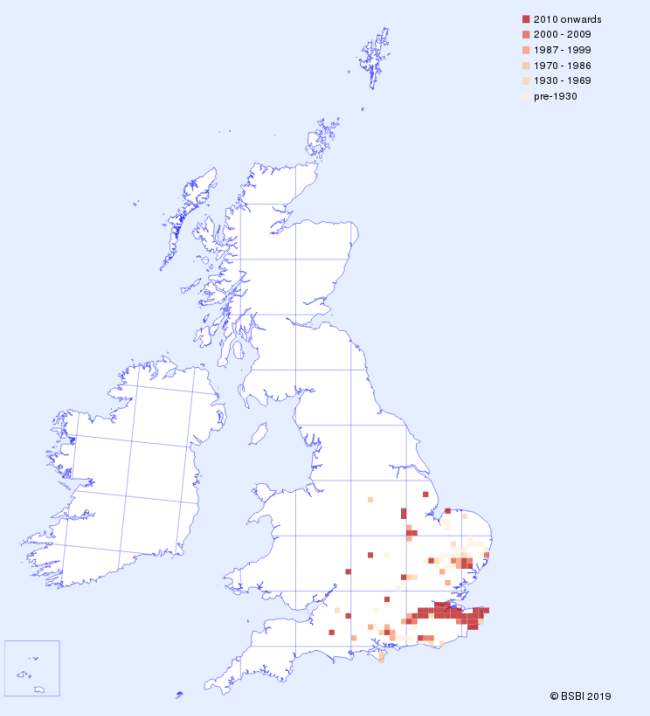The Man Orchid is one of our rarest orchids and is classified as endangered under Schedule 8 of the Wildlife and Countryside Act. Its presence is now confined to a few protected reserves and sites around England, and the numbers are still in decline. It is particularly vulnerable to agricultural pollution and runoff but scrub encroachment is also a problem. As its name suggests the flowers of Orchis anthropophora resemble a tiny hooded figure making it relatively easy to identify although the drab greenish colour makes it difficult to spot. The flowers are often tinged with dark brownish-red and less often with yellow. It is sometimes confused with the Frog Orchid Dactylorhiza viridis (which is a much smaller plant) and Common Twayblade Neottia ovata (easily distinguished by the two large oval basal leaves). The Man Orchid grows in a number of habitats including sand dunes, roadside verges and downland, but all are chalk-based. Orchis anthropophora flowers from late April to the end of June. The Man Orchid is still widespread in southern and western European countries and does particularly well in the Mediterranean region.
| Distribution Map | Key Features | |
 |
Records for the Man Orchid from BSBI are shown on the map with most recent in front. (Hover the mouse over the small map to expand it.) |
Plant: 20-45cm but can reach 60cm. |
Image Gallery for Man Orchid Orchis anthropophora
| Pollination | Taxonomy & Hybrids |
Insect pollination by ants and hoverflies may occur, but most reproduction is thought to be vegetative via the production of additional tubers. |
There are no subspecies. Orchis anthropophora var. flavescens lacks red pigments and has a green hood and yellow lip. Hybrids with Monkey, Lady and Military orchids are common in parts of the plant's European range but rare in England. Orchis x bergonii, the hybrid with the Monkey Orchid Orchis simia, has been reported but may have been the result of a mistake with hand pollination. Orchis x meilsheimeri, the hybrid with the Lady Orchid, was found in Kent in 1998 when two plants were seen. |
Articles about Man Orchid in JHOS
-
